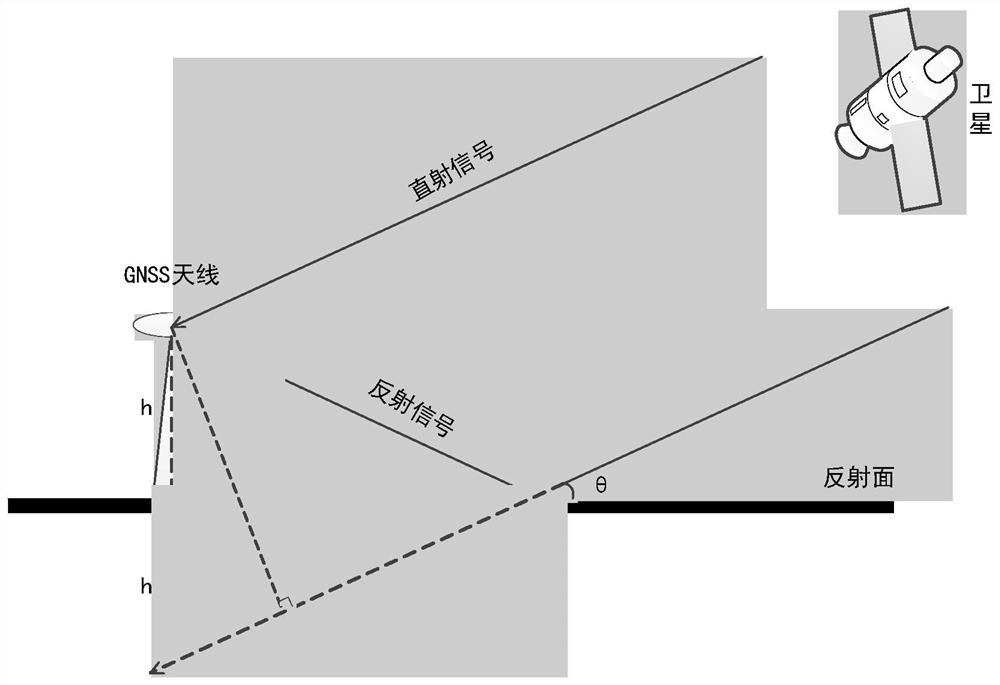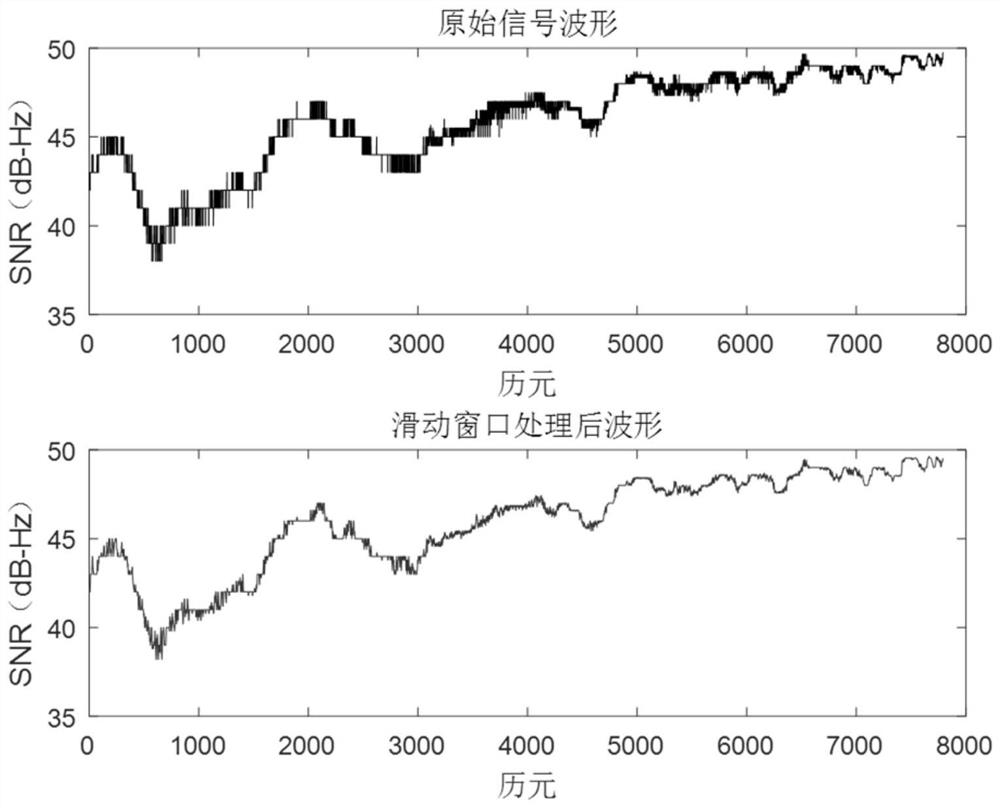GNSS-IR height measurement method suitable for navigation receiver
A navigation receiver and receiver technology, which is used in surveying, mapping and navigation, measurement devices, altitude/level measurement, etc. It is difficult to apply and promote problems, so as to increase the possibility of screening valid data, improve the accuracy of frequency estimation, and reduce the difficulty of promotion.
- Summary
- Abstract
- Description
- Claims
- Application Information
AI Technical Summary
Problems solved by technology
Method used
Image
Examples
Embodiment Construction
[0059] Now make further description to the specific implementation case of the present invention in conjunction with accompanying drawing.
[0060] The present invention utilizes the collected satellite interference signal to calculate the height of the antenna from the reflecting surface, and its principle is explained below:
[0061] figure 2 Geometric model diagram of the multipath effect in the receiving process of the satellite direct signal and reflected signal. Then the power relationship model is as formula (16):
[0062]
[0063] It is assumed that the noise conforms to a Gaussian distribution, and the reflected signal power which is severely weakened during the propagation process is ignored. Then the relationship of signal-to-noise ratio in height measurement satisfies formula (17):
[0064]
[0065] The multipath signal interferes with the direct signal at the receiving antenna, which will cause oscillation, and the lower the elevation angle, the more coh...
PUM
 Login to View More
Login to View More Abstract
Description
Claims
Application Information
 Login to View More
Login to View More - R&D
- Intellectual Property
- Life Sciences
- Materials
- Tech Scout
- Unparalleled Data Quality
- Higher Quality Content
- 60% Fewer Hallucinations
Browse by: Latest US Patents, China's latest patents, Technical Efficacy Thesaurus, Application Domain, Technology Topic, Popular Technical Reports.
© 2025 PatSnap. All rights reserved.Legal|Privacy policy|Modern Slavery Act Transparency Statement|Sitemap|About US| Contact US: help@patsnap.com



